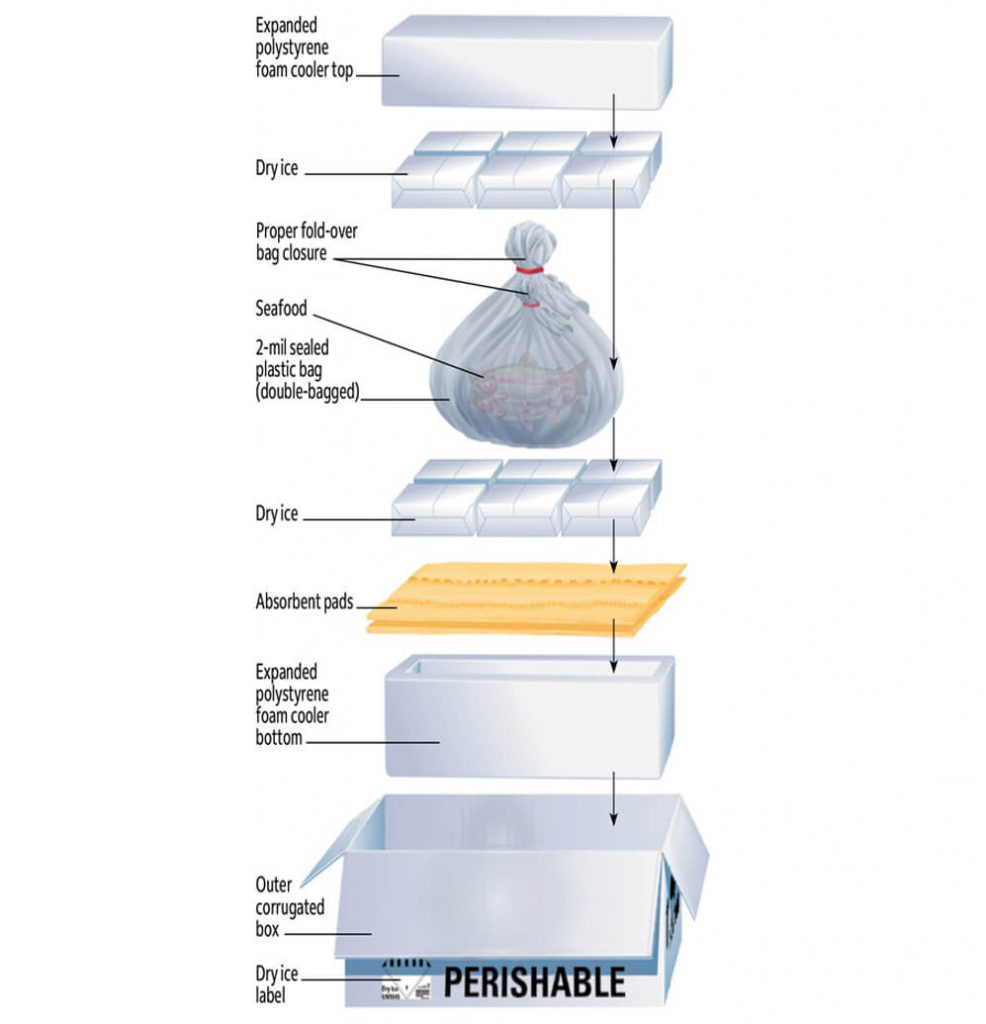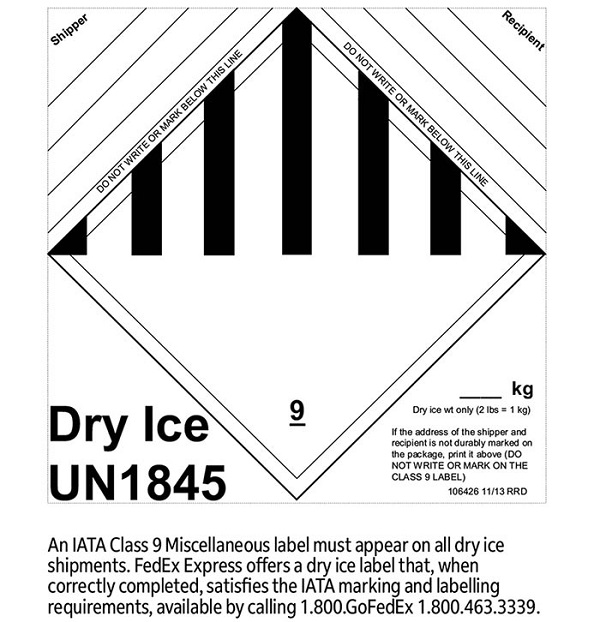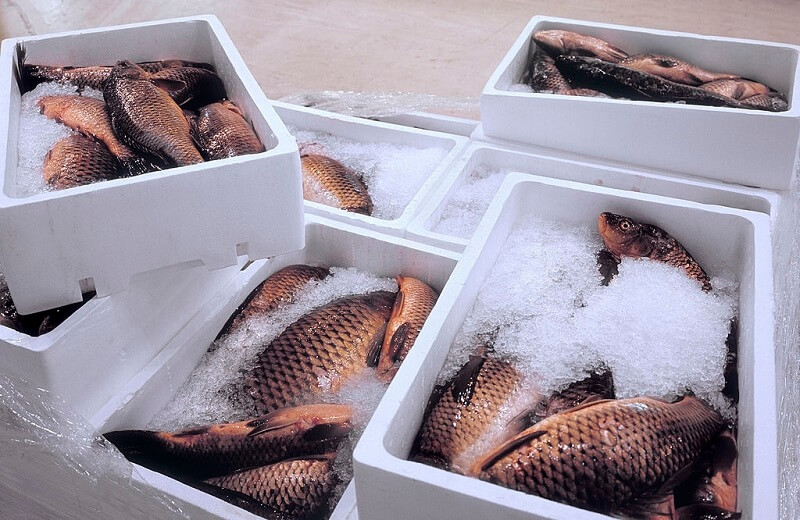Shipping Seafood | How to Ship Sea Foods Overseas
When you have trout fish in a restaurant, did you ever think about how this fish gets on your plate?
Without a doubt, this is a long shipping process to bring this yummy seafood to your table so you can enjoy fresh salmon, shrimps, prawns, cod, lobsters, and crabs.
In this article, we will discuss how to ship frozen seafood, key challenges, the step-by-step packaging process, how to ship seafood, and how to choose the right carrier.
As you may have guessed, seafood plays a vital role in the world’s food chain. When it comes to export fish it has to take the major precaution to ship seafood or frozen fish from one country to another.
In this case, shipping frozen fish is the most delicate thing to spoil. Sometimes, it can easily lead to food poisoning or toxicity. When this product moves it needs proper care because of its nature it needs to be transported by air freight.
Table of Contents
How to Ship Seafood Overseas?
Well, there are a couple of options when it comes to shipping fresh seafood overseas. Every option has its pros and cons, but you want to ship perishable food, so there is only one option: air freight.
It’s the best way to ship frozen food or perishable food in a very fast way.
Things you should keep in mind when shipping fresh seafood overseas
In this section, we’re going to quickly look at some rules and regulations for transporting perishable food or frozen items. Keep the following points in your mind:
● Keep the temperature below 40F
● Use leak-proof plastic bags and sealed them properly
● Packing should be in well build sturdy containers/boxes
● Pack food with dry ice or different cooling material
● Place seafood in a portable refrigerator
● Label the container “Dry Ice” so the crew will know
● A cautious label should be used
What Are The Key Challenges For Shipping Seafood?
Let’s discuss some key challenges for shipping fish or seafood:
- Deficient cold storage and unhygienic environment
- Fermentation during the rainy/hot season
- Bacterial growth and low temperature
- Excessive loss of moisture can make the product freezer burn
Things That Are Used For Packaging Seafood
I’d like to share the things you need to pack for shipping frozen fish are:
- Outer corrugated box
- Insulated container
- 2-mil plastic liner
- DryIce/ gel pack/wet ice
- Dry Ice labels
- Insulated container lid
- Absorbent mat/towel
- Zip-tie or another tie
- 3-4 plastic bags at least 4mm thick
How To Pack Frozen Seafood?

- First, you put your frozen fish or seafood in protective plastic bags at least 4mm thick and puncture-resistant.
- Use zip-ties or other ties to secure the bag to prevent leaks and spills.
- Twisting, folding, removing excess air, and tying the bag tightly.
- Repeat this process once more, add frozen gel packs in the next plastic bag in the bottom, and place the seafood packet on an absorbent mat inside the box and bagging, twisting, folding, and tying.
- Prepare an insulated container, make space for dry ice, keep seafood packages into the container with dry ice, and fill space with loose-fill packing peanuts or mic-pack polyform.
- Close the insulated container lid but not fully closed because of dry ice. It makes carbon dioxide gas so it must be allowed to vent.
- Finally, place the insulated container box into the outer corrugated box then pack this box with the H-taping method and apply it to all flaps and seams.
E-Type Container
Fish and seafood are usually packed in E-Type ULD containers like EH, E, and EO and are supplied by carrier services standards in the airline industry.
DRY ICE Label (IATA Class 9 Miscellaneous)
This label must appear on the box outside. Where you should provide correct identification, classification, marking, and labeling on it.
- The IATA DRY ICE shipment details are:
- Name and address of the shipper
- Name and address of the consignee
- Net weight of DRY ICE in kg
- UN 1845 (Numeric identification of dry ice)
- Carbon dioxide or Dry Ice
What Kind Of Documents Will Be Required For Shipping Seafood?
The required documents for shipping fresh seafood are:
Airway bill
Certificate of origin
Commercial Invoice
Healthy Inspection Certificate
Shipper’s Export Declaration
Shipper’s Certificate for live animals
Insurance Certificate
CITES certificate
Airway Bill
It provides documentary evidence of the number of packages that have been shipped, the weight and type of the goods being shipped. It should also include the handling information about “ LIVE” or “FRESH”. In the case of DRY ICE. the information must be like this:
Airway Bill
It provides documentary evidence of the number of packages that have been shipped, the weight and type of the goods being shipped. It should also include the handling information about “ LIVE” or “FRESH”. In the case of DRY ICE. the information must be like this:
“FRESH CRABS, DRY ICE; 9; UN1845; 4 * 2 Kg III”
Here, 9 → Hazard class numbers for DRY ICE
UN 1845 → UN Identification number for DRY ICE
III → UN packing group for DRY ICE
4 * 2 kg → Net quantity in kg of DRY ICE per box/package

Certificate of Origin
This document is required by some countries issued by the competent authority in the exporting country.
Commercial Invoice
It’s a bill for the goods from the seller to the buyer to determine the true value of goods.
Health Inspection Certificate
This document certifies that the product meets certain standards imposed by the importing country, especially for shipping fish and seafood.
Shipper’s Export Declaration
This document contains specific information like:
- Product description
- Value of the product
- Net and Gross weight
- Shipper’s Name
- Consignee’s name
- Commodity Code Number
Shipper’s Certification for the Live Animals
For live sea animals/ fish, you need an IATA certificate for live animals.
Insurance Certificate
This certificate states the type and amount of coverage about CIF(Cost, insurance, freight)
CITES Certificate
CITES ( the convention on international trade in endangered species) focuses on plant and animal species protection from unregulated international trade.
How to Ship Seafood A Step-By-Step Process
Step-1 First, you need to ask the shipper or carrier for a quote for shipping fresh seafood.
Step-2 Hire a freight forwarder to manage the complete freight.[MH1]
Step-3 Issue purchase order and decide the set of Incoterm so freight forwarders can arrange the transportation of goods.
Step-4 Get the letter of credit from the bank so the supplier will issue the order confirmation and commercial invoice. It’s required on custom clearance.
Step-5 Prepare the documents which are mentioned below:
The shipper will prepare these documents,
- Packing list
- Certificate of Origin
- Shipper’s letter of instruction
- Dangerous goods
The buyer will prepare these documents,
- Export declaration
- A permit to export/import for prohibited goods
Step-6 To avoid disappointment, you need to book freight early. So, goods will be processed through custom clearance and export declaration.
Step-7 Goods will be transported by air to their destination and ready to go import clearance.
Step-8 After passing the custom process, they will be delivered to the buyer or consignee.
Why Is Choosing the Right Air Carrier Important In Seafood Shipping?
When you ship frozen fish or seafood you should understand which type of carrier services are best for your shipment especially when you ship seafood. A carrier who must offer these services:
First of all, the thing you need to consider is the cost and delivery time. If you choose a cheap carrier you have to compromise on quality and delivery time. So, keep these points in your mind when choosing any carrier.
- If they have a proper storage system to keep your seafood fresh.
- They should know about how to maintain the low temperature for seafood whether it should be negative 20 or below 20. Because below 20 or negative 10 could be harmful to seafood.
- They use the right carton/container/refrigerator for seafood.
- They also have an overnight shipping service so your goods will be delivered the next day to save more time.
The above things can only be possible if you hire any trusted carrier like Qafila.
The Bottom Line Besides the fact, we know diligent handling before shipment is the most important part so the goods remain in good condition. So, yes you need to hire a trusted and reliable carrier who can help you to ship fresh fish to its destination.






